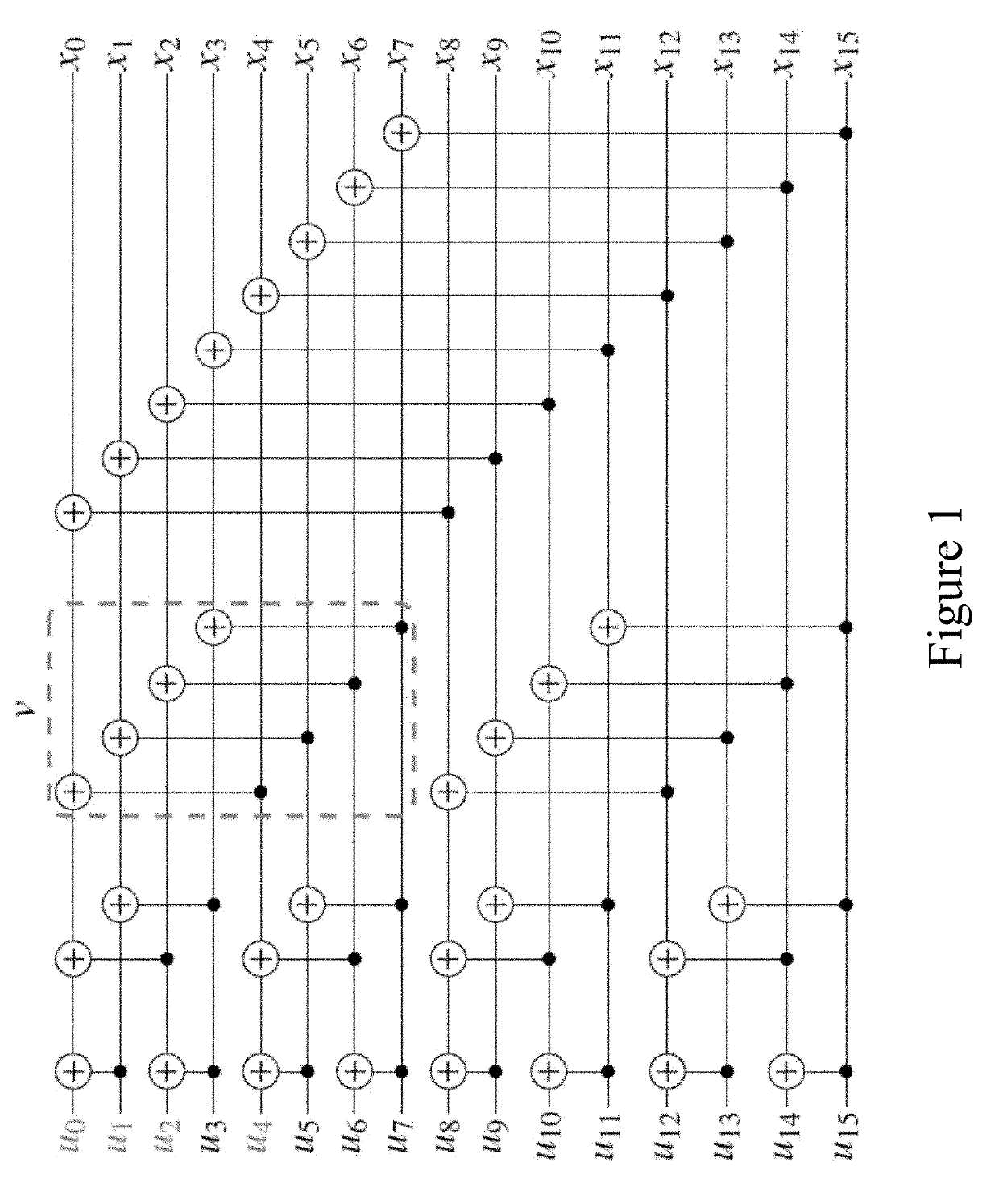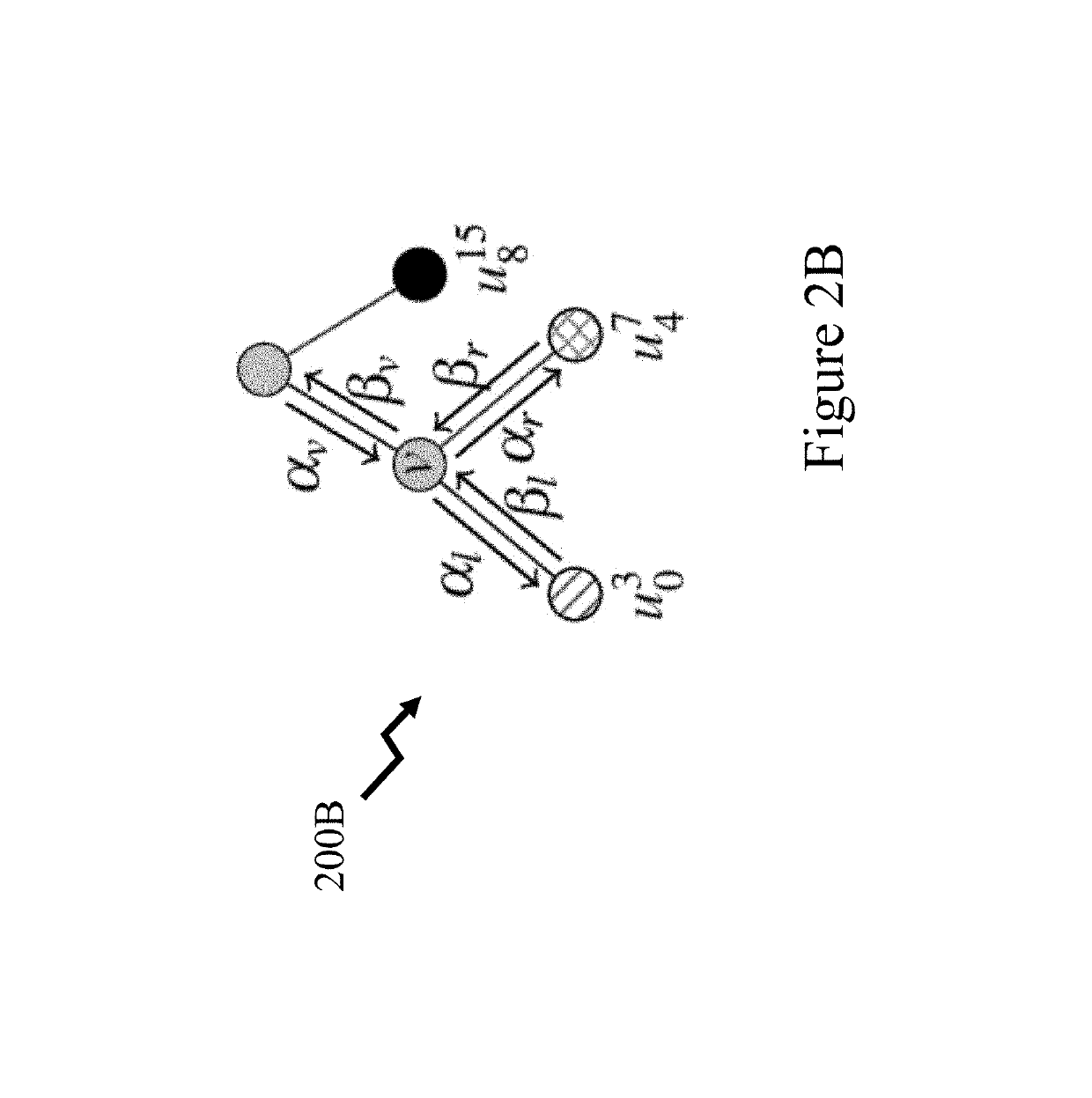Multi-mode unrolled polar decoders
a polar code and multi-mode technology, applied in the field of polar codes, can solve the problems redundancy comes at the cost of reducing the effective rate of data transmission, and the length or rate of the code cannot be modified at execution time,
- Summary
- Abstract
- Description
- Claims
- Application Information
AI Technical Summary
Benefits of technology
Problems solved by technology
Method used
Image
Examples
Embodiment Construction
[0023]The present disclosure is directed to polar codes and more specifically to fully-unrolled polar code decoders supporting multiple polar code lengths and data rates, referred to herein as a multi-mode unrolled decoder.
[0024]An (N, k) polar code has length N, carries k information bits and is of rate R=k / N. The other N−k bits, so called frozen bits, are set to a predetermined value, usually zero but possibly another value, during the encoding process. Non-systematic polar encoding can be represented as x=uFN where u is a row vector containing both information and frozen bits, and FN is a generator matrix. This FN can be defined recursively so that FN=F2 log2 N, where
[0025]F2=[1011]
and is the Kronecker product. Determining the optimal locations for the information bits depends on the channel type and condition.
[0026]Encoding schemes for polar codes can be either non-systematic or systematic. Systematic polar codes offer better bit-error-rate (BER) than their non-systematic count...
PUM
 Login to View More
Login to View More Abstract
Description
Claims
Application Information
 Login to View More
Login to View More - R&D
- Intellectual Property
- Life Sciences
- Materials
- Tech Scout
- Unparalleled Data Quality
- Higher Quality Content
- 60% Fewer Hallucinations
Browse by: Latest US Patents, China's latest patents, Technical Efficacy Thesaurus, Application Domain, Technology Topic, Popular Technical Reports.
© 2025 PatSnap. All rights reserved.Legal|Privacy policy|Modern Slavery Act Transparency Statement|Sitemap|About US| Contact US: help@patsnap.com



